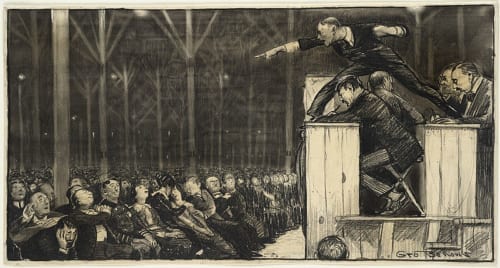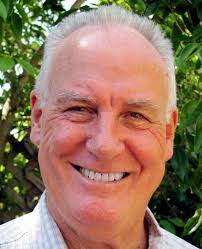When done well, PBL can change a student’s perspective on life.
By Thom Markham
 Project based learning, the rising star in the educational firmament, is on the lips of nearly every teacher and district in the U.S. and in many countries abroad. A newly recruited army of PBL experts march to the front of professional development workshops, evangelizing for project-based work and selling the notion that this is what 21st Century education looks like.
Project based learning, the rising star in the educational firmament, is on the lips of nearly every teacher and district in the U.S. and in many countries abroad. A newly recruited army of PBL experts march to the front of professional development workshops, evangelizing for project-based work and selling the notion that this is what 21st Century education looks like.
But we’re not there yet. PBL has not yet fulfilled its potential to liberate the deep, inventive intelligence inherent in children and crucial to mastering the skills and attitudes that carry an adult through today’s world. In fact, unless we move on, PBL will plateau.
This state of affairs is not due to a shoddy product. In fact, a field-tested, solid set of best methods and teaching practices now inform PBL, and a consensus is forming around ‘high-quality’ PBL. The what of PBL is well-defined.
So, what’s missing? It’s the how of PBL. When done well, PBL is lot like a good novel: It changes a young person’s perspective on life. But the secret sauce is not the method; it’s the set of attitudes, beliefs, and skills that a teacher brings to PBL’s process of investigation, collaboration, and synthesis. To support the relationship-driven, personalized, person-focused education necessary to tap the inner life of today’s students, PBL must be rooted in fresh thinking about human performance, design and creativity, collective intelligence, core knowledge, and the symbiosis between innovative schooling and societal needs.
While discarding an industrial-era mindset is critical for all educators, a good PBL teacher inevitably tangles with the assumptions that underlie the entire enterprise of modern education. PBL teachers guide, they do not teach. They listen and observe more than they talk. They are extremely curious about their students, and value diverse expression. They plan for outcomes, but approach a project with a flexible touch that allows for unforeseen results. They respect knowledge, but the end goal is not the test; the primary goal is to form the deep intellectual bond with students that leads to a mutual appreciation for learning.
Successful PBL teachers need to build this flexible, innovative mindset into the heart of every project. That’s when the method gets results. A few critical insights can move more PBL teachers in this direction:
Recognize Why PBL Exists
PBL exists because content acquisition and testing, as we have known it, is done. PBL is designed to teach skills and attitude, not content. That’s a bitter pill, because PBL advocates have spent a decade in a rear-guard effort to convince other educators that students can learn important stuff through projects. But PBL helps students learn a new form of content that encompasses core knowledge, appreciation of concepts, skillful application, ability to inquire further, and reflective self-direction. Essentially, PBL is a response to the changed nature of the world.
It’s Not a Thing, It’s a Design Process
“I’m doing a PBL,” say many teachers. No, not really. PBL may be a noun and projects can be based on a unit of instruction, but it’s a process of discovery driven by design principles. This may seem like a nit-pick, but the mental model matters. Freeing students from the 19th century box of units, linear instruction, and regurgitating known solutions and answers and holding PBL in the mind as a learning experience encourages the kind of openness that spurs the innovative problem-solving essential to getting at those deeper levels of mastery to which we give endless lip service: Critical thinking and creativity.
Teach to the Iceberg
 PBL will bloom when PBL teachers define intelligence as psychologists do today: As behaviors that matter in today’s world. Which behaviors matter most? Empathy, curiosity, openness, and resiliency top the list. These behaviors form the foundation for mastering 21st Century skills. They are iceberg traits, hidden from easy view and unreachable through testing, but elicited through well-designed, challenging projects that allow for student expression, offer opportunity for creativity, reward the persistence of deep intellectual work, force critical thinking and operationalize the growth mindset. This shift includes accepting that intelligence is a whole-body exercise in which emotions and cognition blend into a coherent pattern of behavior, letting go of outdated views on social-emotional learning versus academic learning, and questioning neuromyths such as learning styles, multiple intelligences, and ‘brain based’ learning.
PBL will bloom when PBL teachers define intelligence as psychologists do today: As behaviors that matter in today’s world. Which behaviors matter most? Empathy, curiosity, openness, and resiliency top the list. These behaviors form the foundation for mastering 21st Century skills. They are iceberg traits, hidden from easy view and unreachable through testing, but elicited through well-designed, challenging projects that allow for student expression, offer opportunity for creativity, reward the persistence of deep intellectual work, force critical thinking and operationalize the growth mindset. This shift includes accepting that intelligence is a whole-body exercise in which emotions and cognition blend into a coherent pattern of behavior, letting go of outdated views on social-emotional learning versus academic learning, and questioning neuromyths such as learning styles, multiple intelligences, and ‘brain based’ learning.
Stop Thinking of a Teacher as a Teacher
 500 years ago, theologians stood at the lectern and shared ‘nearer to God’ content with neophytes. That stereotype clings to the teaching profession, which still focuses on instructional delivery, classroom management, and pacing guides because that’s what teachers do. There is still room for this approach, but we refuse to see what teaching has become: A facilitative profession in which the skills of mentorship, diagnosis, designing, and assessing the deeper aspects of human performance are critical. This is especially true of PBL, which relies on a culture of care and a sincere bond between teacher and student to fuel and support the personalized process of self-motivation and curious investigation that ignites and excites a student.
500 years ago, theologians stood at the lectern and shared ‘nearer to God’ content with neophytes. That stereotype clings to the teaching profession, which still focuses on instructional delivery, classroom management, and pacing guides because that’s what teachers do. There is still room for this approach, but we refuse to see what teaching has become: A facilitative profession in which the skills of mentorship, diagnosis, designing, and assessing the deeper aspects of human performance are critical. This is especially true of PBL, which relies on a culture of care and a sincere bond between teacher and student to fuel and support the personalized process of self-motivation and curious investigation that ignites and excites a student.
Personalize and Differentiate PBL
 Thinking of PBL as a designed learning experience allows us to connect design thinking, maker spaces, inquiry-based learning, personalized learning, and other forward-leaning ideas into the grand unified theory that will serve as the template for 21st Century education. The tenets of PBL — a challenging problem, collaborative inquiry, a design and draft and revise process, and a public sharing of learning — provide a fine structure for any investigative process, whether a project on Shakespeare or an engineering problem. PBL can move forward by becoming a flexible design process applied and personalized for audience and subject, whether a case-based PBL focused on helping students become workforce ready, a science-focused PBL that prepares students for the deep analysis on Advanced Placement exams or a global studies PBL centered on research and solutions to pressing issues.
Thinking of PBL as a designed learning experience allows us to connect design thinking, maker spaces, inquiry-based learning, personalized learning, and other forward-leaning ideas into the grand unified theory that will serve as the template for 21st Century education. The tenets of PBL — a challenging problem, collaborative inquiry, a design and draft and revise process, and a public sharing of learning — provide a fine structure for any investigative process, whether a project on Shakespeare or an engineering problem. PBL can move forward by becoming a flexible design process applied and personalized for audience and subject, whether a case-based PBL focused on helping students become workforce ready, a science-focused PBL that prepares students for the deep analysis on Advanced Placement exams or a global studies PBL centered on research and solutions to pressing issues.
Choose Challenge Before Standards
PBL is a powerful educational model that helps young people master problem solving in a global society desperately in need of solutions. But the power drains out of PBL when standards become more important than the challenge of engaging real issues with real conviction with real consequences. That’s the true impetus behind successful projects. A good PBL teacher pays attention to standards, but never lets them decide the project. It’s far more important to reach for the stars.
Author
 Founder of PBL Global and a leading author, psychologist, and respected international school consultant, Thom Markham has assisted over 350 schools and 6000+ teachers across five continents in implementing project based learning, 21st century competencies, and successful inquiry-based systems of teaching and learning. PBL Global offers a hybrid cost-effective, teacher-effective approach to professional learning for PBL that integrates a powerful library of online courses, staff coaching, and teacher support. Email thom@pblglobal.com or follow him on Twitter
Founder of PBL Global and a leading author, psychologist, and respected international school consultant, Thom Markham has assisted over 350 schools and 6000+ teachers across five continents in implementing project based learning, 21st century competencies, and successful inquiry-based systems of teaching and learning. PBL Global offers a hybrid cost-effective, teacher-effective approach to professional learning for PBL that integrates a powerful library of online courses, staff coaching, and teacher support. Email thom@pblglobal.com or follow him on TwitterFurther Reading
- The Gazette – Project-based charter school proposal piques D-11’s interest
- Ed Week – Teaching U.N. Sustainability Goals to Create Global Citizens
- Lesson Planet – Ease Your Way into Project-Based Learning in Six Easy Steps



